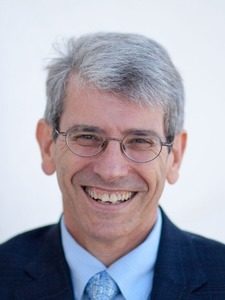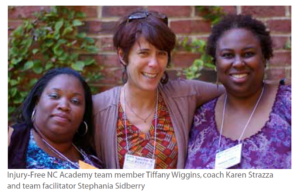[Sheree Bekker] In the lead up to the 13th Australasian Injury Prevention and Safety Promotion Conference, I have invited keynote speaker Professor Steve Marshall to answer a few questions for our blog.
Steve Marshall, PhD, is an injury epidemiologist. He is the Director of the University of North Carolina (UNC) Injury Prevention Research Center. He is also a professor of epidemiology in UNC’s Gillings School of Global Public Health and faculty in UNC’s Matthew Gfeller Sports-Related Traumatic Brain Injury Center. Dr. Marshall has 25 years of experience and over 250 research publications in the fields of epidemiology and injury control. He serves on the Executive Committee of the SafeStates Alliance, the Board of Advisors for the Datalys Center for Sports Injury Research and Prevention, and on the National Steering Committee for the American Medical Society of Sports Medicine’s Collaborative Research Network.

- Tell us about your training and role in injury prevention
Professional development is an on-going activity across one’s entire professional career. I first started learning about injury prevention in the early 1990s from a British biostatistician named Colin Cryer, who was a wonderful mentor. Around this time, I also learned a lot from working alongside John Langley, as part of his team at Injury Prevention Research Unit, University of Otago. This was in Wellington and in Dunedin, New Zealand.
By the end of the 1990s I had earned a PhD in Epidemiology from the University of North Carolina (UNC) in the USA. Although my university education was complete, I still had a lot to learn about injury prevention from people outside the university, such as people who develop and deliver injury prevention programs, advocates in the community, injury survivors and their families, and lawyers and politicians.
As Director of the UNC Injury Prevention Research Center, my current role is to help create cutting-edge research, and ensure it is translated into concrete public health gains such as legislation and injury prevention programs.
- What do you see as the issues currently facing injury prevention?
The pressing challenge before injury prevention is simple: how can we achieve a real and sustained shift in society’s attitudes to injury and violence prevention as a whole. We need to achieve a lasting change in the structure of social systems that impact safety. We need a sustained effort to understand the social structures that impact safety attitudes and safety decision-making, and a long-term strategy to change them. This action is, I believe, is part of the Take Action call for “systems for safer cities and stronger communities”. Simply put, we need strategies that institutionalize safety as a core value in multiple ways within and between the plethora of social units (e.g. governments, hospitals, neighborhoods, families).
- What is your research focus, and how does your research Take Action?
In collaboration with our practice-focused partners, my center uses empowerment strategies to build community capacity in wide range of other areas, including road safety and violence. In collaboration with the North Carolina state health department, we provide injury prevention knowledge and skills to community-based organizations through the Injury Free NC Academy.

A lot of my career has focused on sports injury epidemiology. When we started studying sports-related concussions in the early 2000s, the topic was largely invisible to the general sports community. Due to the efforts of many researchers, including our team, concussion is hot-button topic for the contact sports community. Strengthening the capacity of the sports community to address concussion is key to sustaining momentum and continuing to change the culture of sports to prevent concussion.

Professor Carolyn Emery from University of Calgary’s Sport Injury Prevention Research Centre reminds us that we are all participants in #concussion management #UNCTBI2017 pic.twitter.com/Acw9emDWPd Professor Carolyn Emery was speaking at the 4th Matthew Gfeller Sport-Related Neurotrauma Symposium on the UNC campus.
- What can emerging researchers learn from you?
Switch to building probes for exploring other solar systems. It’s less frustrating and people at parties will think you are way cool.
- What are you looking forward to most about your upcoming trip to Australia?
I’m looking forwards to spending some time with the ACRISP (Australian Collaboration for Research into Injury in Sport and its Prevention) team at Federation University Australia. They are world leaders in focused strategies for sports injury prevention.
The call for abstracts for the 13th Australasian Injury Prevention and Safety Promotion Conference is now open.